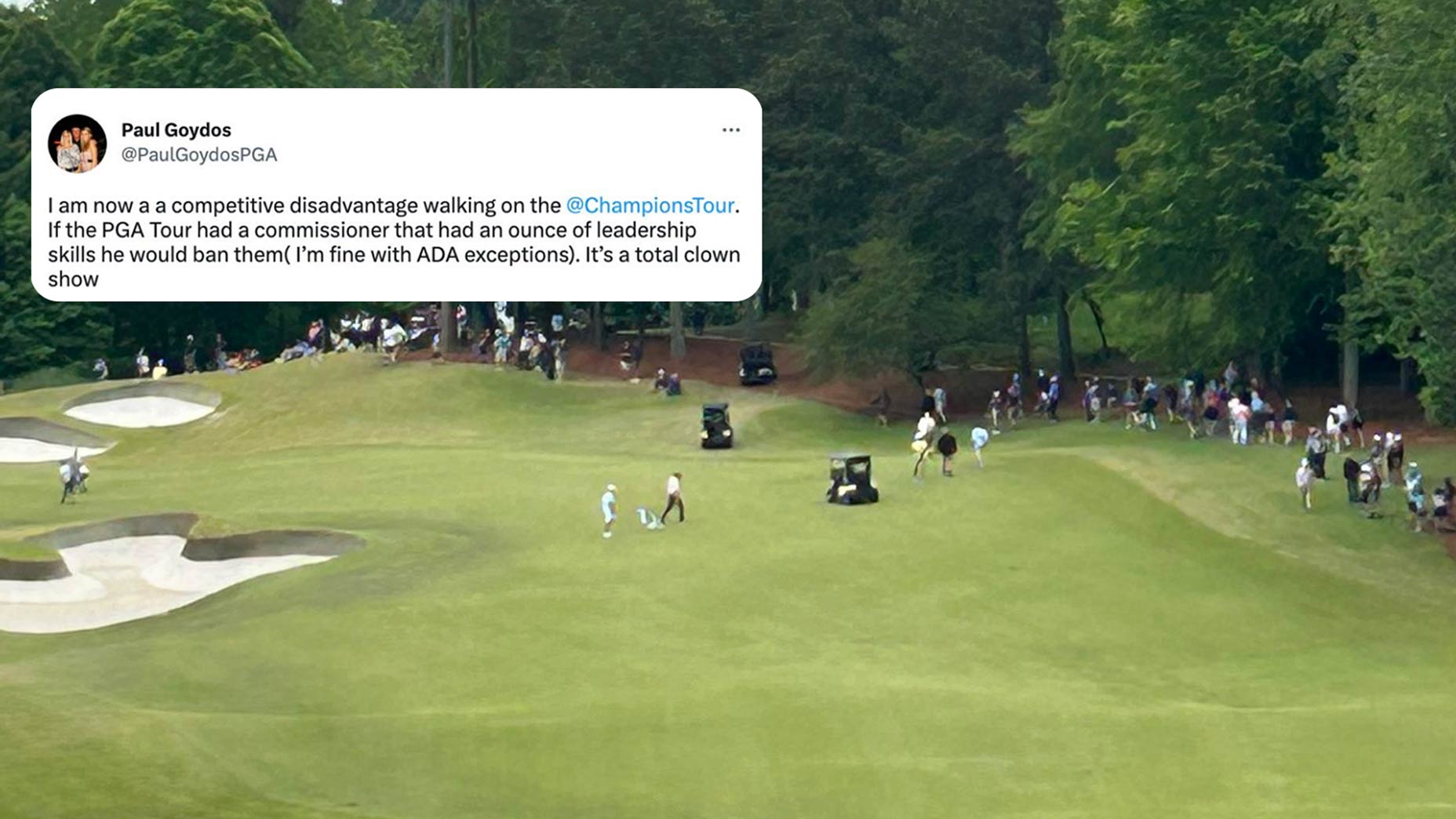CHARLOTTE, N.C. – Nine events into the experiment, it’s best to size the mood among PGA Tour types as cautiously optimistic.
The designated reality that the threat of LIV Golf forced on the Tour has now delivered, in order, a list of champions that includes Jon Rahm (three times), Scottie Scheffler (twice), Kurt Kitayama, Sam Burns, Matt Fitzpatrick and now Wyndham Clark. Even the most casual observer would concede the compelling mix of headliners and hopefuls, which some contend is the secret sauce that will make the new elevated lineup so much more compelling.
If the likes of Rahm and Scheffler are the kind of bottom-line production the designated events require, the intoxicating mix of Kitayama and Clark – who boat raced the designated field at the Wells Fargo Championship by four shots on Sunday for his first Tour victory – are the promise that’ll keep the entire concept in line.
Gathering the stars at historic venues like Quail Hollow Club, Bay Hill and Riviera was, in retrospect, the easy part. The Tour had been doing that for decades at the now-defunct World Golf Championships. But designated events – which include the four majors, The Players, the three playoff stops and nine other select tournaments this season – also needed to provide a pathway for tomorrow’s stars like Clark, who at 29 years old appears to be playing the best golf of his career.
It’s a small sample size, and next year’s schedule, which will bring a dramatic realignment, will come with an entirely new set of challenges. But midway through the circuit’s first season of the designated era, the broad brush strokes are promising.
Full-field scores from the Wells Fargo Championship
“Each week we’ve had exciting golf tournaments coming down the finish with a host of top players and also some guys that are not necessarily household names challenging the top players,” said Adam Scott, who closed with a 71 to finish tied for fifth place at Quail Hollow. “I think they have been exciting events, stacked fields. I certainly have had the sense in the players’ lounge or the locker room it’s like major championship golf. You look around and every big name is here. I think it’s been fantastic so far.”
That’s not to say the concept has been universally embraced. Of particular interest is the plan to limit the designated event fields to 70 or 80 players with no cut starting next year. That, according to a wide range of players including Tiger Woods, is problematic.
“I like having the cut,” Jason Day said. “I’m like on the other side of what most people think in regards to having [smaller fields], we’re just going back to the [World Golf Championships] days essentially.
“You’re going to have a great field, which is great. If you play well in those events, typically you’ll stay inside the top 50 every single year and that typically it’s a lot easier for you to stay in the top 50 that way. I think this year’s worked out great with the cuts. We’ve had the best players in the world rise to the occasion on multiple occasions now.”
Although Day’s take is valid and shared by many, the economic reality of designated events, which average $20 million purses and require a substantially higher commitment from sponsors, makes the guarantee of four days from the best players attractive to both corporate and network partners.
“I had a conversation with Tiger last week about it,” Tour commissioner Jay Monahan said earlier this week. “I think for the changes that we’re looking to make going into next year, to have all of our top players there, for our fans to know at the beginning of the week or as soon as that event is on the calendar, the players are going to be there all four days, from an onsite standpoint to a television standpoint, there’s real benefit to it.”
For the players, the designated events have started to provide a distinction that will only make the elevated tournaments an even more important part of the Tour.
“When these meetings were starting to happen, I was on the outside looking in,” said Rickie Fowler, who had fallen outside the top 150 in the work ranking last year when the designated event plan was hatched at the BMW Championship. “But to me, when you play well or win a PGA Tour event, if you ask guys would you rather win this event, let’s say here or one that’s toward elevated, versus one that is a secondary event obviously guys are going to pick the one that’s bigger. You know you’ve beat the best players. The more we can get the product to that it’s only better for everyone.”
The concern, as Fowler sees it, is the gap between the have and the have nots had grown too wide in recent decades on Tour and if the designated model helps pull more tournaments toward the median the entire circuit benefits.
“It’s meant to be the best, most elite tour in the world and I feel like in the past 5, 10 years between some of the top events and some of the bottom there’s a little bit too big of a gap in the product,” Fowler said. “The quality of players is deep but if you look at the world ranking there are some tournaments that don’t feel like they meet the criteria, so your product is pretty stretched out.”
The Tour is hoping that even with questions about field sizes, player access and financial sustainability the product continues to deliver on that elevate promise.









